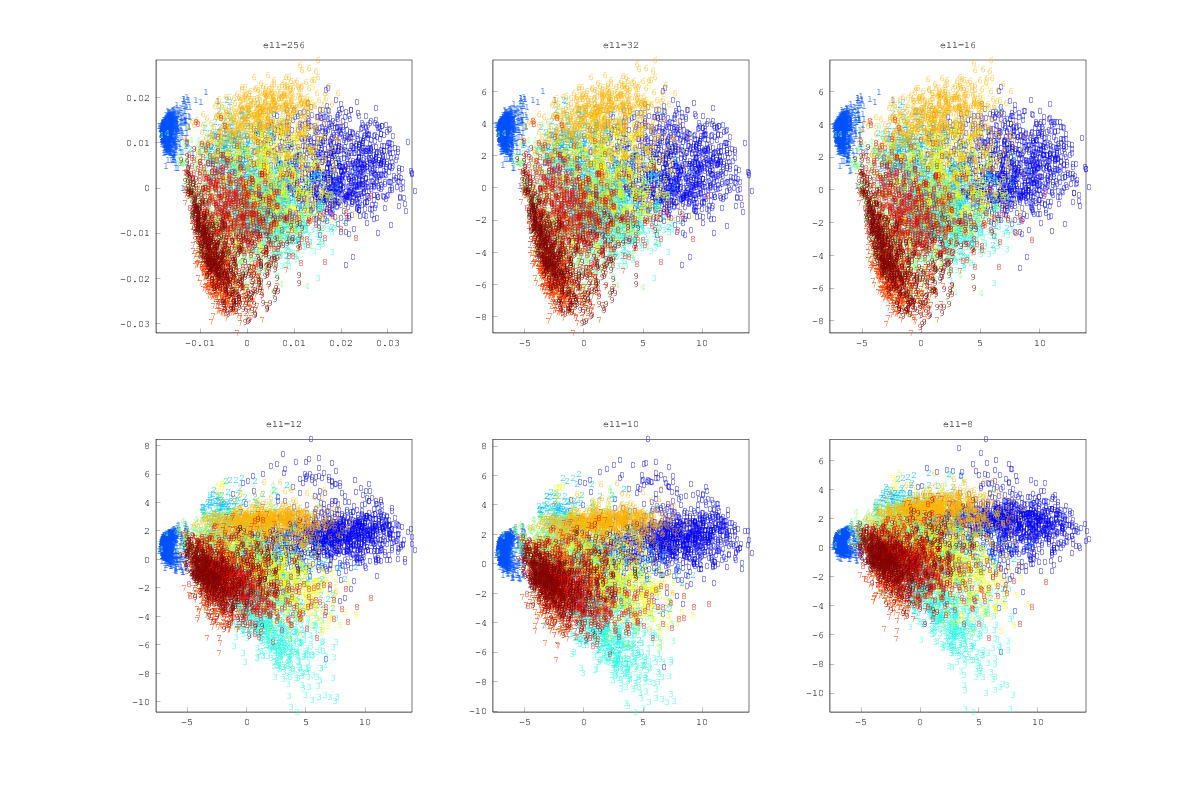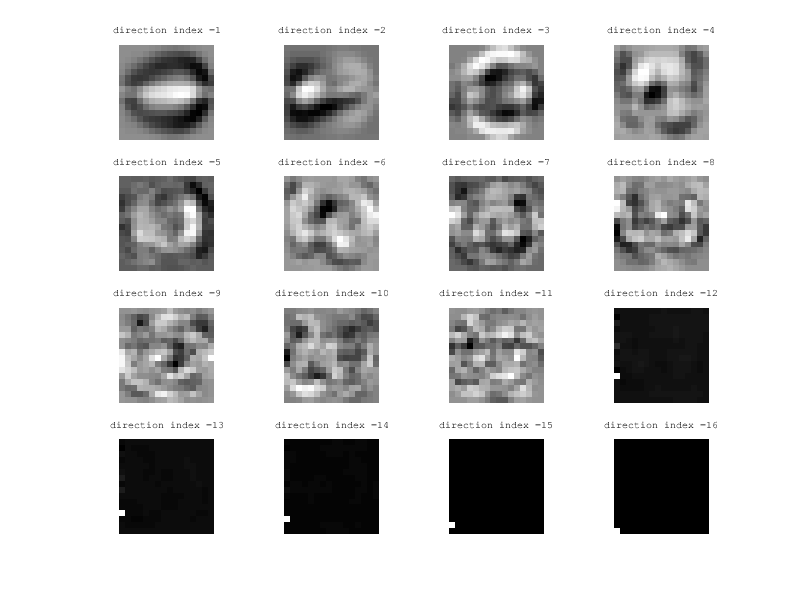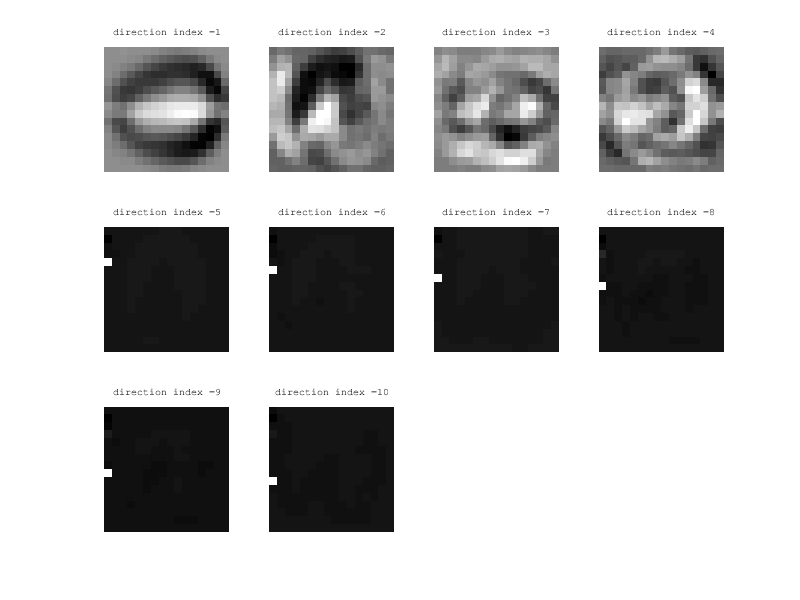Implements matrix sketching using octave, two data sets are used for test.
handwriting digits, \in R^{7291 \times 256}, dimension reductionRandom data, instance sketching
If original data set is too large to be loaded onto memory, matrix sketching provides a efficient way for holding only
| Method | Description |
|---|---|
| load_digits | load handwriting digits dataset to memory |
| sketch | matrix sketching |
| reduce | dimension reduction |
| nzero_idx | find out index of largest non-zero column from matrix |
| plot_digits | plotting digits onto 2-dimentional space |
| dig_reduction | main script of dimension reduction |
| generate_purchase | generate random data |
| load_purchase | load random data to memory |
| evt_reduction | main script of instance sketching |
Regarding handwriting digits, there are 10 types of digits, 0,1,2,3,4,5,6,7,8,9. Therefore, 10 might be a reasonable feature size of dataset. I tried 256, 32, 16, 12, 10, 8 features respectively. The major 2 components plot is shown as the following figure.
16 almost makes no difference from 256(original feature size). From 12 to 8, it starts losing information due to fewer components could not reconstruct data set well.
If you compare the frequent directions between 16 and 10, it can also explains that why 16 can outperform 10 for reconstructing data set.
16-components
10-components
As mentioned by the sketching paper, Original matrix A \in R^{n \times m} could be skeched row by row in stream style. The sketched matrix B \in R^{\ell \times m} follows B to X \in R^{k \times m} is k most representative directions. The author of sketching paper used SVD for decomposing B like U^TU = V^TV = VV^T = I_\ell(I_\ell stands for the \ell \times \ell identity matrix). It is a implicit condition that \ell < m.
In some cases, we may know X as pre-knowledge and a streamed A, where A_i(i-th row of A) selected from X_i(i \in 1,2,3...k). At any time t, if we obtain B_t from stream, then C_t shows how X contributes
to B_t at time t.


